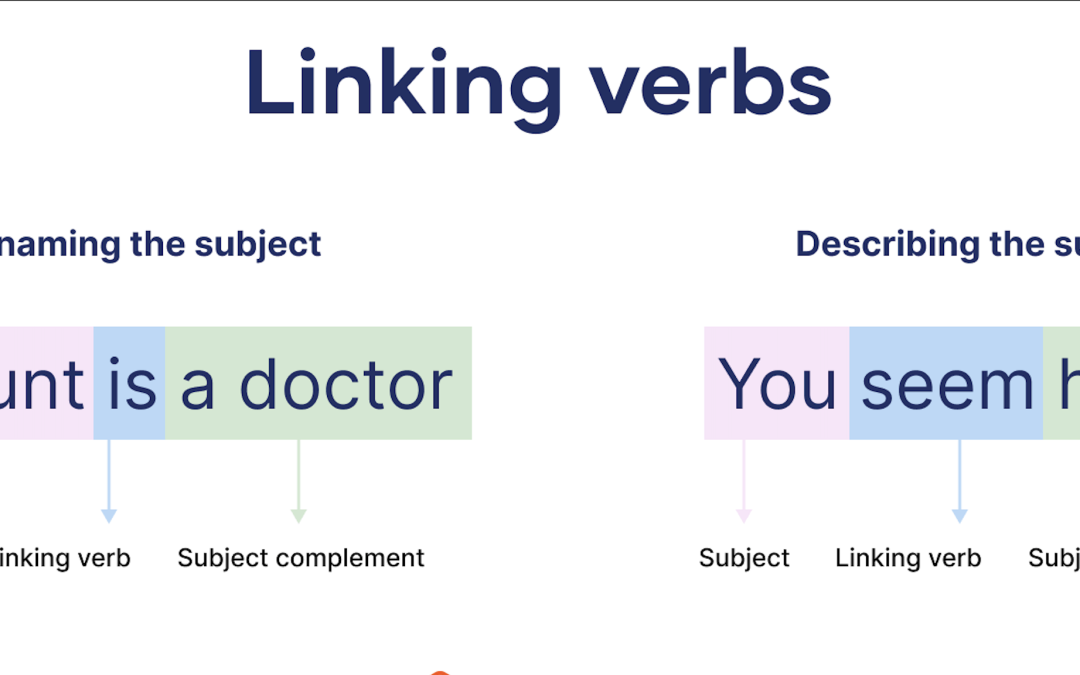Welcome, English learners! Today, we’re going to explore a crucial part of English grammar that can help you express ideas more clearly and effectively: linking verbs. These verbs connect the subject of a sentence to more information about that subject. Let’s dive into seven simple tips to help you master linking verbs and take your English skills to the next level.
1. Know the Common Linking Verbs
The most frequently used linking verb is “to be” (am, is, are, was, were, be, being, been). Other common ones include appear, become, feel, seem, smell, sound, taste, and look. For example:
- I am happy. (to be)
- She appears tired. (appear)
2. Identify the Subject and Complement
To use linking verbs correctly, you must know the subject (the noun or pronoun the sentence is about) and the complement (the word or phrase that gives more information about the subject). The complement can be an adjective, noun, pronoun, adverb, or prepositional phrase. Here’s an example:
- He is a teacher. (subject: He, complement: a teacher)
3. Distinguish Between Linking Verbs and Action Verbs
Action verbs show that the subject is doing something, while linking verbs show a relationship between the subject and additional information. Remember:
- She runs. (action verb)
- She is energetic. (linking verb)
4. Use Adjectives with Linking Verbs
Linking verbs are often followed by adjectives that describe or modify the subject. For instance:
- The sky looks clear today. (linking verb followed by an adjective)
5. Experiment with Different Complements
Practice using various types of complements after your linking verbs to enrich your writing. Remember, linking verbs can be followed by:
- Adjectives: He feels happy.
- Nouns (in certain cases): They became friends.
- Infinitives: She wants to be successful.
- Gerunds: He enjoys playing soccer.
- Clauses: **The book seems to be interesting.
6. Maintain Consistent Tense and Voice
Ensure that the tense of your linking verb matches the tense of the rest of your sentence. Also, be aware of whether your sentence is in active or passive voice, as this can affect your choice of linking verb and complement.
7. Read and Analyze
One of the best ways to improve is by reading widely and analyzing how other writers use linking verbs. Pay attention to the variety of verbs and complements they use, and try incorporating similar structures into your own writing.
By following these simple tips, you’ll be well on your way to mastering linking verbs in English. Remember, practice makes perfect. Keep learning, and don’t forget to have fun along the way!
Keywords: linking verbs, English grammar, English learners, verb tenses, sentence structure, active voice, passive voice

